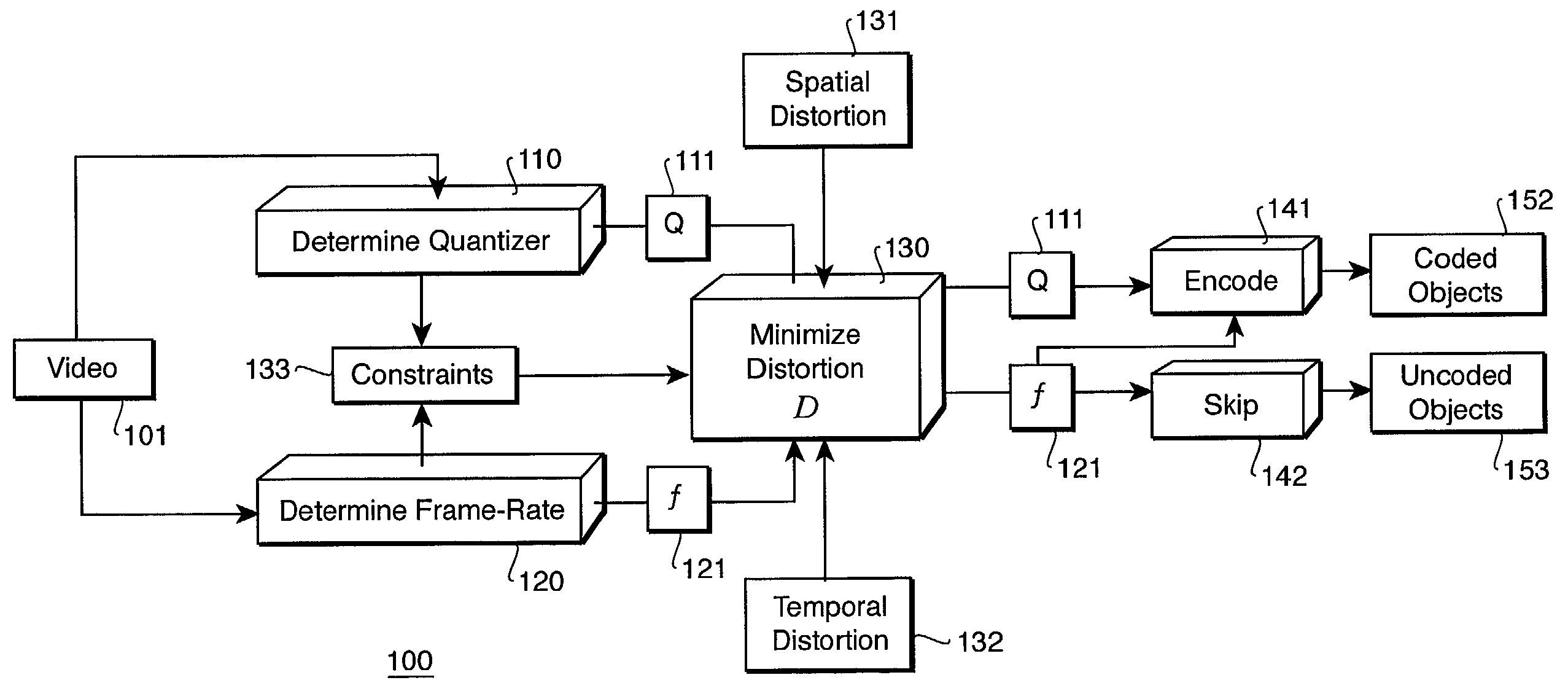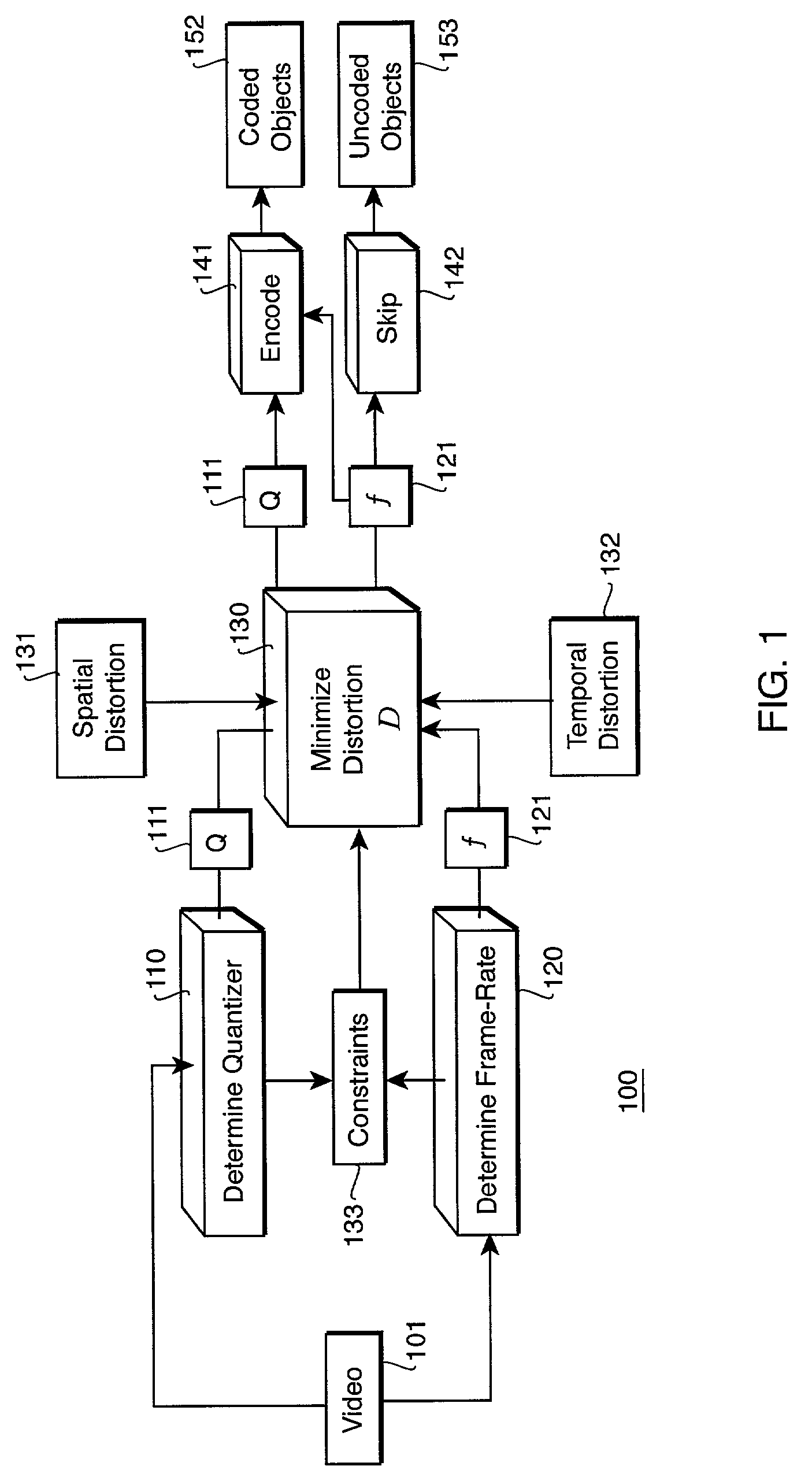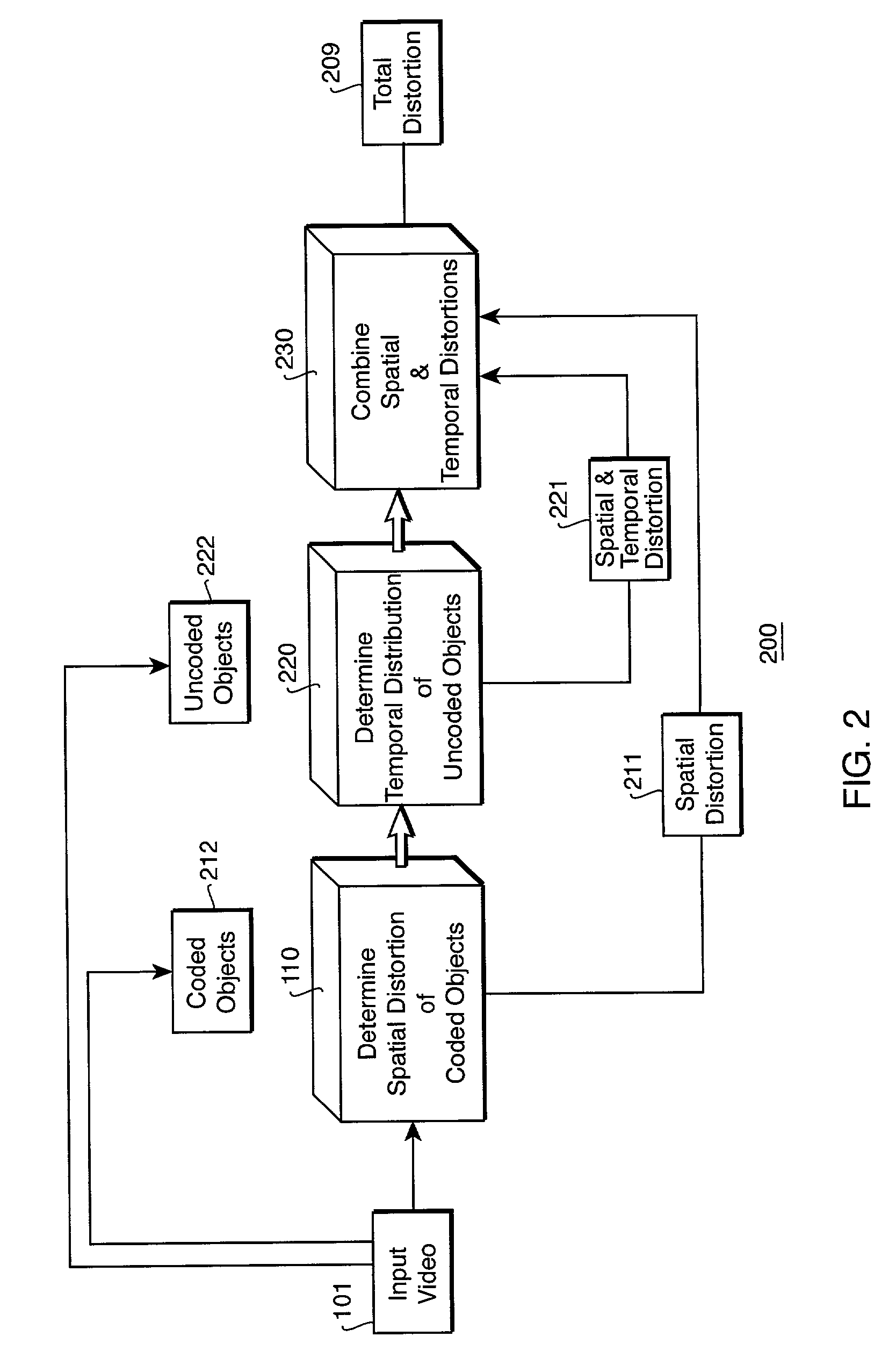Encoding a video with a variable frame-rate while minimizing total average distortion
a variable frame-rate, video technology, applied in the field of video coding, can solve the problems of buffering, coders being forced to skip frames, and most encoders only skip frames, and achieve the effect of optimally minimizing the average total distortion
- Summary
- Abstract
- Description
- Claims
- Application Information
AI Technical Summary
Benefits of technology
Problems solved by technology
Method used
Image
Examples
Embodiment Construction
Introduction
[0017]As shown in FIG. 1, our invention provides a method 100 for coding a video 101. Moreover, the video 101 is coded with a variable temporal rate for Video Object Planes (VOP's), or simply with variable VOP-rates. Our method determines 110 a quantizer parameter (Q) 111 for each object, and also determines 120 a VOP-skip parameter, or simply skip parameter (fs) 121. The quantizer and VOP-rate parameters jointly minimize 130 spatial distortion 131 and a temporal distortion 132 in the video, while satisfying predetermined constraints 133. Then, the object is encoded 141 as a coded object 152 with the quantizer parameter 111 and the VOP-rate parameter 121, or skipped 142 as an uncoded object 153 with only the skip parameter 121 parameter to minimize the average distortion while satisfying the constraints 133. According to the skip parameter 121, a coded object 152 at a given time instant is encoded 141 with quantization parameter 111. During this process, (fs−1) uncoded o...
PUM
 Login to View More
Login to View More Abstract
Description
Claims
Application Information
 Login to View More
Login to View More - R&D
- Intellectual Property
- Life Sciences
- Materials
- Tech Scout
- Unparalleled Data Quality
- Higher Quality Content
- 60% Fewer Hallucinations
Browse by: Latest US Patents, China's latest patents, Technical Efficacy Thesaurus, Application Domain, Technology Topic, Popular Technical Reports.
© 2025 PatSnap. All rights reserved.Legal|Privacy policy|Modern Slavery Act Transparency Statement|Sitemap|About US| Contact US: help@patsnap.com



